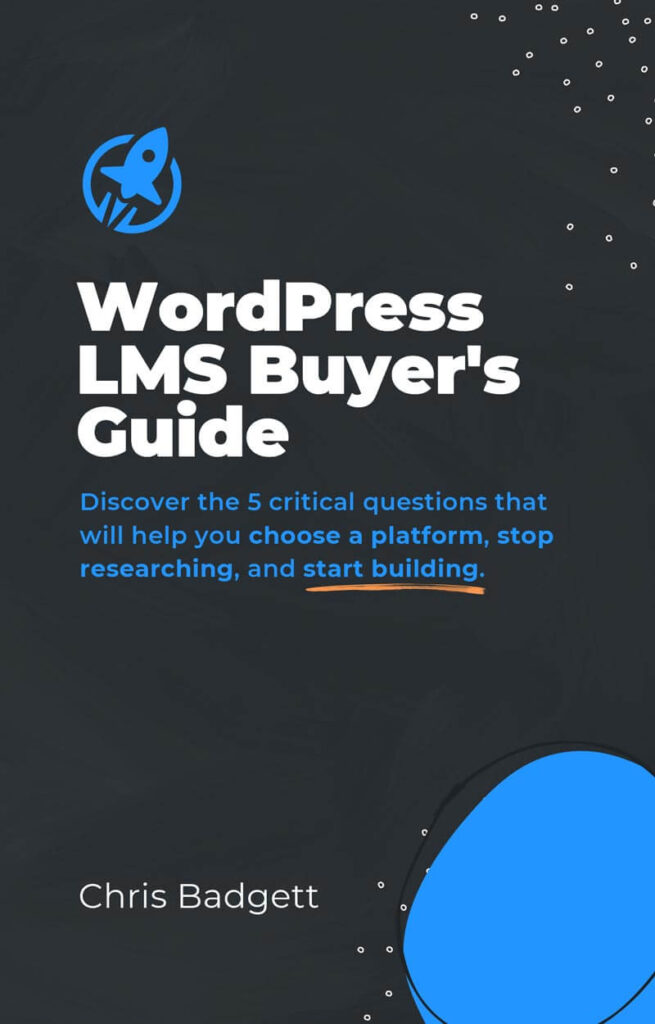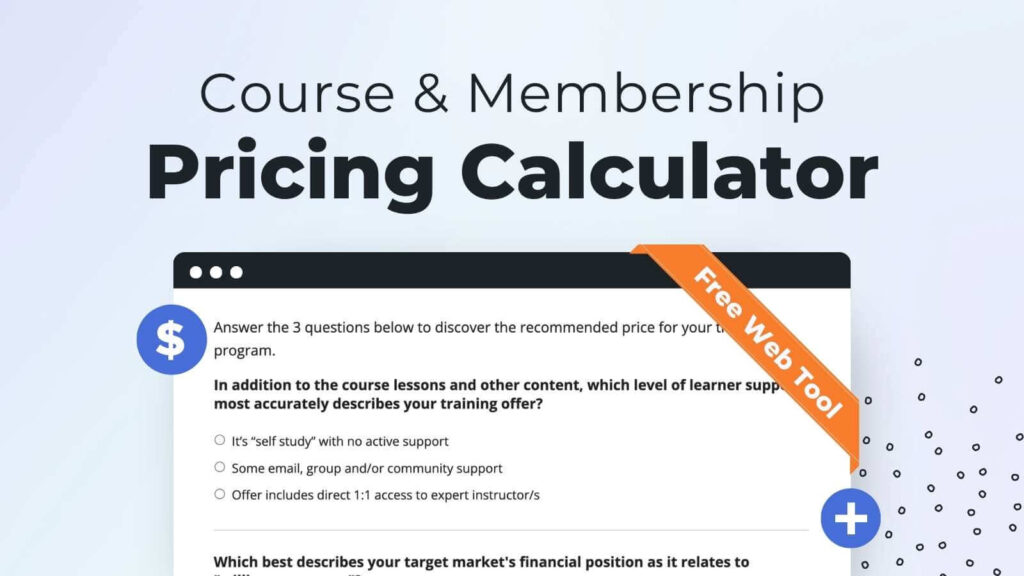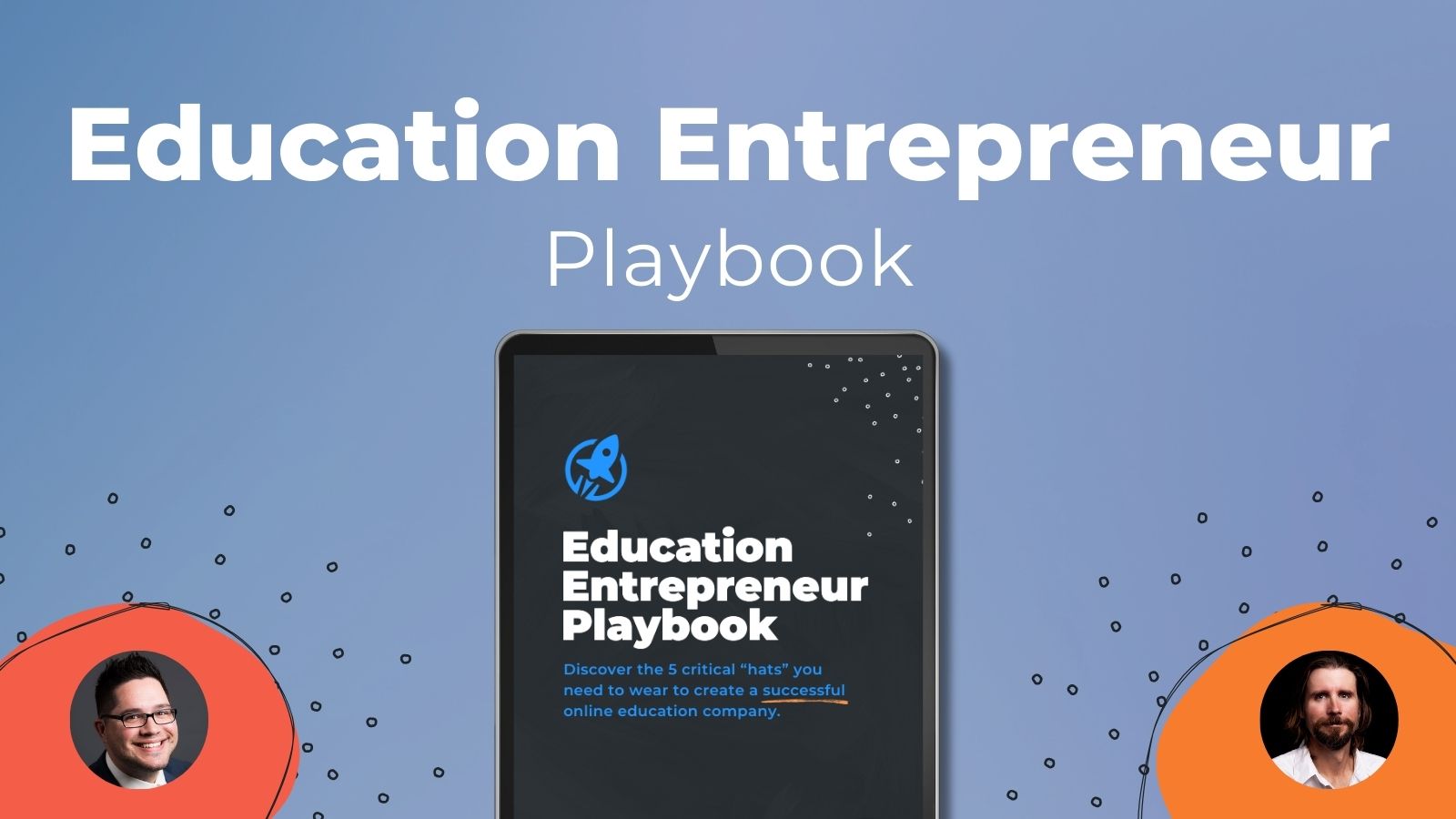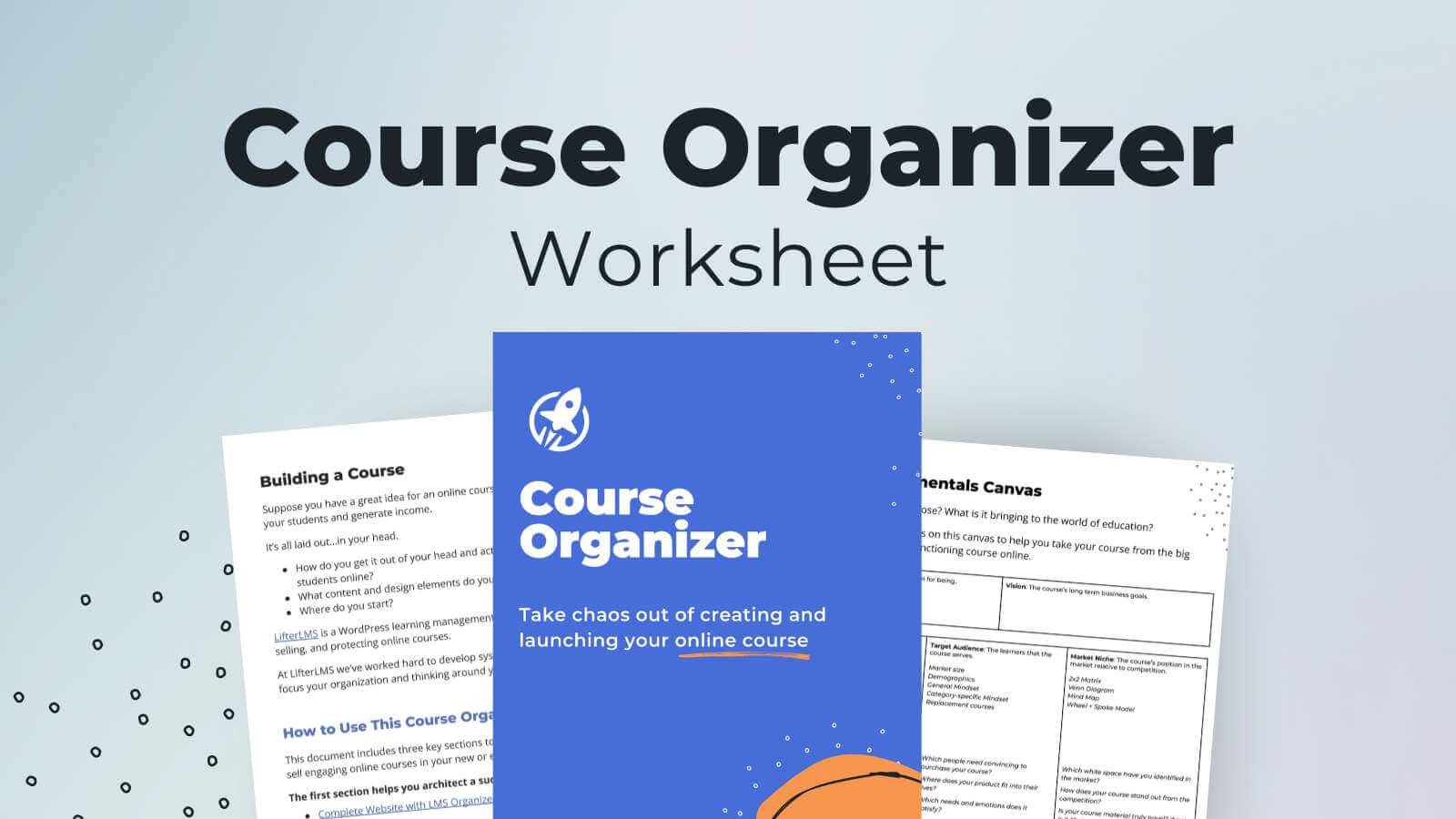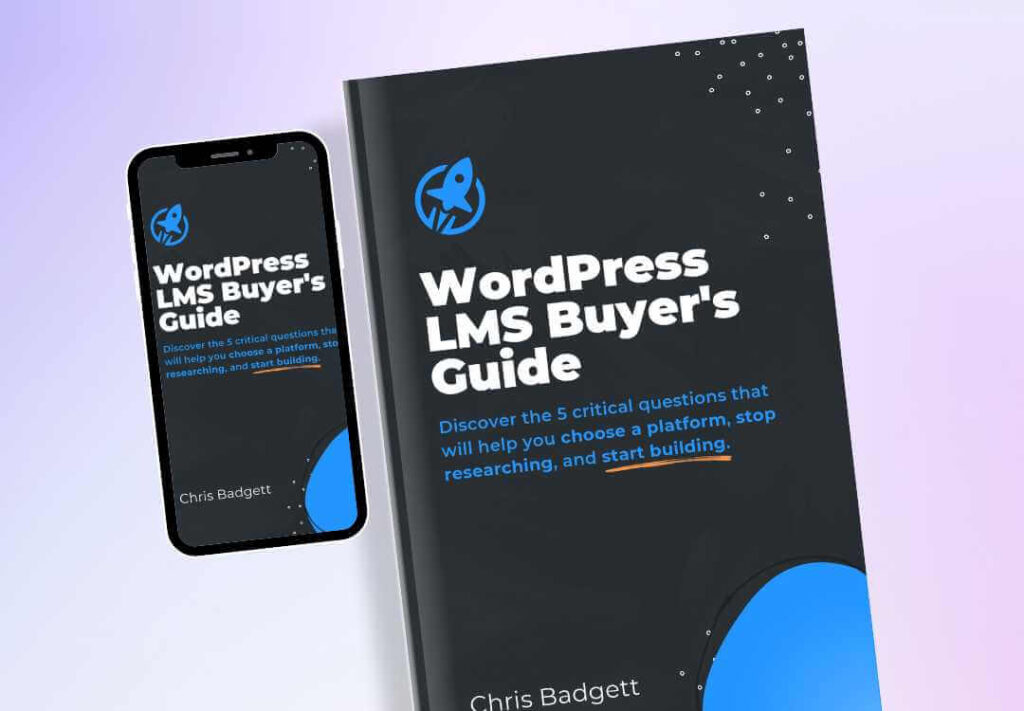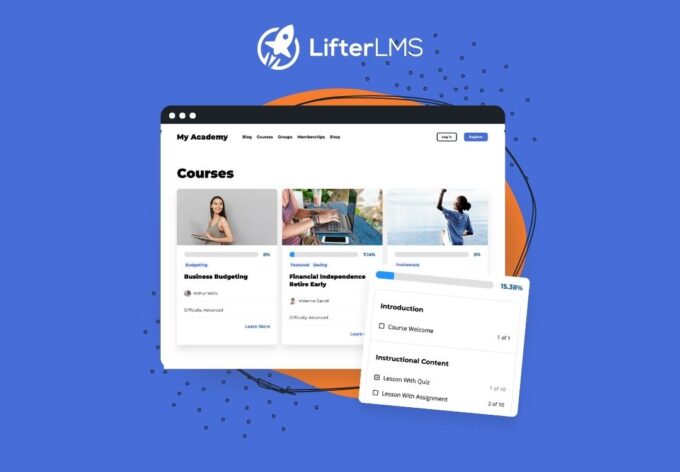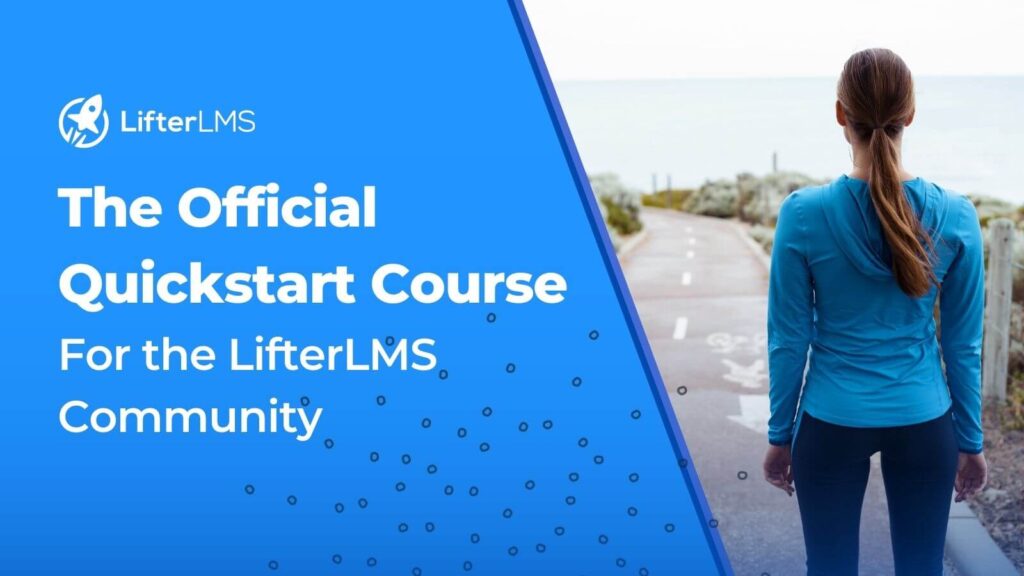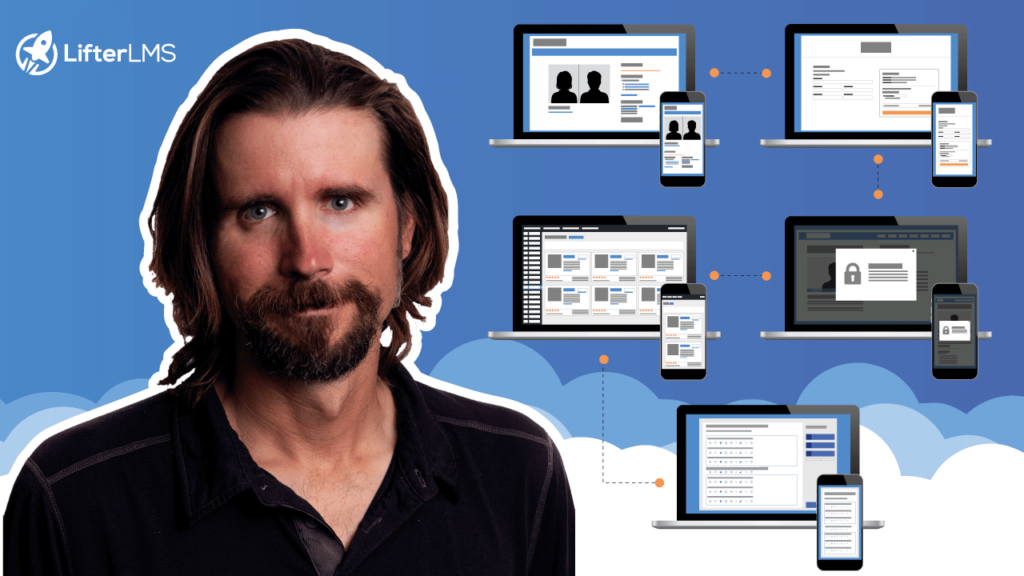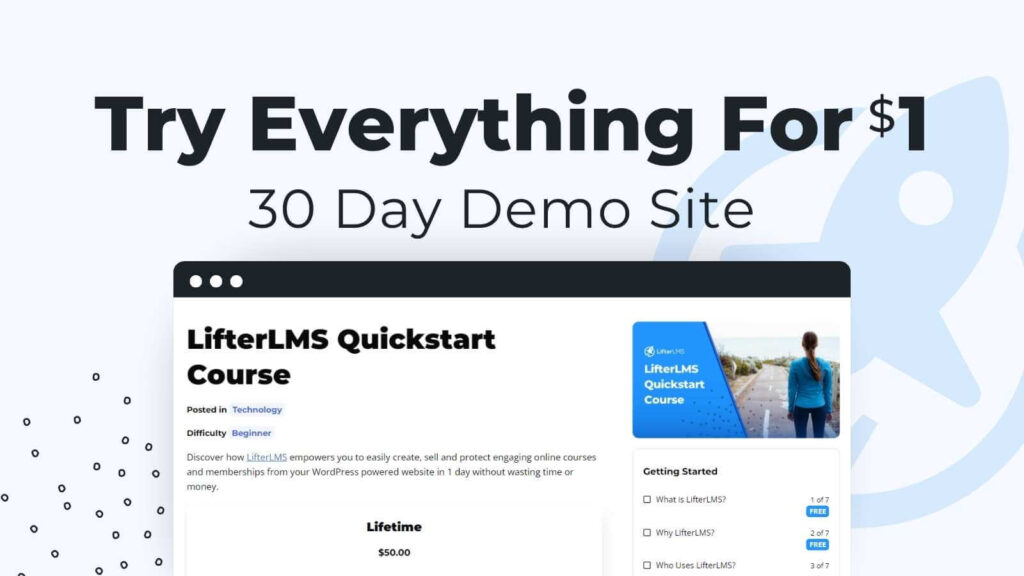This episode is brought to you by Popup Maker
Boost Your Website’s Leads & Sales with Popup Maker
Get started for free or save 15% OFF Popup Maker Premium—the most trusted WordPress popup plugin to grow your email list and increase sales conversions.
Chris Badgett offers his advice on creating and running an email list that now has over 100,000 subscribers in this episode of LMScast.
He makes the case that, when compared to social media, email is the most reliable and efficient marketing medium since it is used by everyone and can be utilized for prospecting, nurturing, sales, and customer support. Chris emphasizes that although having a larger list frequently results in higher revenue, the caliber of members is significantly more significant than the number.
Chris emphasizes that if the proper individuals are on them, even tiny, focused lists may provide meaningful commercial outcomes. Additionally, he outlines the fundamental procedures for configuring email systems, selecting the best platform, and connecting LifterLMS with CRMs like ActiveCampaign, MailChimp, or ConvertKit.
He also provides helpful advice on how to handle corporate email accounts, such as utilizing shared inbox systems like Help Scout to expedite communication and use role-based addresses (support@, ceo@) rather than personal ones.
In order to maintain professional, scalable, and well-organized message, he concludes by advising every company to set up a minimum of three email addresses: one for personal correspondence, one for marketing/sales, and one for customer service.
2025 WordPress LMS Buyer’s Guide
Exclusive Download! Stop wasting time and money researching online course and membership site tech.
Here’s Where To Go Next…
Get the Course Creator Starter Kit to help you (or your client) create, launch, and scale a high-value online learning website.
Also visit the creators of the LMScast podcast over at LifterLMS, the world’s leading most customizable learning management system software for WordPress. Create courses, coaching programs, online schools, and more with LifterLMS.
Browse more recent episodes of the LMScast podcast here or explore the entire back catalog since 2014.
And be sure to subscribe to get new podcast episodes delivered to your inbox every week.
Episode Transcript
Chris Badgett: You’ve come to the right place if you’re looking to create, launch, and scale a high value online training program. I’m your guide, Chris Badget. I’m the co-founder of lifter LMS, the most powerful learning management system for WordPress. State of the end, I’ve got something special for you. Enjoy the show.
Hello, and welcome back to another episode of LMS Cast. I’m Chris Badgett, and today I am not joined by a special guest. It’s just me, and we’re gonna be talking all about everything I’ve learned in building an email list over a hundred thousand people. Last time I checked, 115,000 people have. Join my email list and I’ve learned a lot about building an email list, email marketing.
I’m gonna share all of that with you today. So welcome. The first thing I just want to talk about is why I love email. Why email is, in my opinion, the most important channel for marketing, but also just supporting your customers. Email is an essential platform. For, doing prospecting sales, warming up an audience, making offers, adding value, delivering your product or service.
There’s so much you can do with email. And the neat thing about email is that everybody uses it. It’s not like social media where some people are on Twitter, some people are on Facebook, some people are on TikTok. Yeah, everybody on all those different social media accounts has a most likely a primary email address.
Maybe they have one or two, maybe a business email, maybe a personal email. But in terms of building an email list, like this is the most important thing for a course creator, a coach or education entrepreneur, to be doing, ideally, even before. They have launched their course or their membership site. And even if you’re an agency building LMS sites for clients, it’s really important to also do email marketing, to also build your email list.
So today I’m gonna go over. So several of the ways I think about email, and I know you’re gonna find some gems to help you create more income, impact and freedom in your life. An email list is a very important piece of your business. There’s an old saying that the quote money is in the list and it’s very true.
I’m trying to remember the exact formula, but there’s this equation. Where based on the size of your email list you probably make somewhere between three to $5 for every email subscriber you have in your business. And I’ve seen this across multiple businesses when I’m, hear about their revenue numbers and how big their email list is.
It’s very much a part. Of just the math or the physics of business. And that the bigger email list you have in general, the more money you’re gonna make. Now, of course, you want to have a high quality email list. Quality is more important than quantity. There’s plenty of people that have built great businesses with a very small email list, as a related example.
I forget the exact number, but the lifter, LMS YouTube channel is very small in terms of subscribers, but we actually do a lot of revenue with a very small subscriber base. Now, there’s YouTube channels with a million subscribers who make far less money than us. So the lesson there is that it’s all about quality, not necessarily quantity.
So don’t get too wrapped up, if you only have an email list of a hundred people. 50 people, if those are 50 or a hundred really awesome, qualified, perfect fit people. That’s great. So it’s not just about getting, a thousand subscribers, 10,000, a hundred thousand, a million, and so on. So the foundations, before you start building an email list, this is one of the, these are some key ideas that people don’t really think about.
The first thing I would say is you need to pick. A tool to gather all your emails into. So the CRM, the email marketing, the email broadcasting platform, there’s a lot of great ones out there. I’ve, and many of you may have used MailChimp over the years. That’s a great place. They have a free option.
I personally currently use something called ActiveCampaign. I’ve been on ActiveCampaign for probably about eight years. We switched at lifter LMS to ActiveCampaign from Infusionsoft eight years ago. And really I got my start in kind of the integration between WordPress and marketing automation with Infusionsoft.
That’s actually where I began as a agency owner and where we focused our agency. And later we ended up building lifter LMS and focusing on the education entrepreneurs. My technical expertise has always been around marketing automation, WordPress, website building email marketing and so on, and combining all those things.
But going back to platforms, there’s so many great email platforms out there. Like a lot of people are happy with Kit, formally known as ConvertKit. There’s a lot of great solutions in WordPress for email like fluid, CRM or groundhog. And there’s many other, email platforms. Some people love HubSpot and so on.
If you’re using Lifter LMS we have a native integration with MailChimp and Kit. Also, there’s a great tool called WP Fusion. There’s a WordPress plugin that can connect your WordPress website to 50 of the most popular CRMs. So definitely check out WP Fusion. It’s a great tool. Now, the simple way this works is that when you get a new user on your site, like in a learning management system or a membership site, you just take that person their name and their email address and pass it over to the email platform, so it creates a user over there as well.
If you’re not using one of the. WordPress solutions like fluent CRM or Groundhog that you could have on the exact same website. But if you’re using something like lifters integration with MailChimp or ConvertKit, you can do fancier things like add them to different lists based on which course they enrolled in, or which membership they enrolled in, rolled in.
You can add tags, trigger automations, and things like that. WP Fusion does that. As well. And again, it allows you to integrate with tons of other email marketing platforms besides MailChimp and ConvertKit. Another pro tip and just when you’re getting started with email, go easy on yourself.
I wish people knew how important this was to figure out the naming convention of your. Email accounts. So more than likely you’re gonna have multiple email addresses in your business. This kind of thing is a hard thing to change later. So it was probably 15 years ago where I was listening to a podcast about organization design, and it was a really smart thing this person said.
They said, when you build an org chart for your company, think instead of. Names or job titles, do email addresses. So an example of this would be [email protected] or [email protected], customer [email protected]. So that’s just a way to think about it. ’cause sometimes people create like way too many email addresses.
Or they attach something to a name like [email protected] and then Robert leaves the company. But now all this stuff was set up with Robert’s email. Another pro tip like we do at lifter LMS, if you start getting at scale and you’re doing a lot of things like pre-sales and supporting existing customers, is we actually use one email inbox for the entire company.
It’s called Help Scout. It’s a great tool, and basically the way it works is the public is only interacting with one email address, but inside that help Scout, there’s multiple users who have their own unique email address, like their Google Company workspace, email address, and, they can be assigned to conversations and past conversations around and so on.
But that makes it really easy for the public to just have one email to communicate with. And then it also allows you to work as a team with multiple people just interacting in one inbox. So that’s just a pro tip there. But so there’s like your personal email, your business email, but then you’re gonna be sending email broadcasts.
Or maybe when students sign up for a course and they get a welcome email, it’s important to think about what email address we’re going to use for those services. As an example I, if I could wave a magic wand for you, I would just give you, for your entire company, three email addresses. And the first one is just for you.
So if your name is. Susan, it would be [email protected] and create that inside of Google apps or whatever. That’s your primary one-on-one email address. But then what you wanna do is you want to set up two more email addresses that are gonna be used as scale for things like mass communications and stuff.
The first one is more sales oriented. Oh, and marketing oriented. The second one is for customer support. The sales one and the marketing one I do not recommend naming that email address something like [email protected]. Nobody get, gets excited when they see an email from marketing at something.
So for that email address I would do something like, hello, at. Your company name.com. So that’s an example. So that’s like the pre-sales one where you’re doing like mass marketing, you’re doing marketing automations, you’re doing newsletters, things of that nature. And then on the support side for your customers.
I recommend an email address support at your company, name.com, or help at your company. name.com. Now the reason this is important to have three email addresses, and I should just say you’re gonna have more as you add team members. Like they’ll each get their individual email at your company. But if you’re operating solo you need those three.
So sometimes people unsubscribe from emails that are, marketing related. It’s just the nature of doing business and sending emails. That’s why you don’t wanna put your personal email like [email protected] as the email address. You’re gonna be sending, marketing communications from, because somebody out there may want to sign up for your newsletter, they’re loving it, but then they unsubscribe or even they get tired of your emails, your marketing emails, and they mark you as spam.
And then. You try to reach out to them one-on-one for something and your email never gets to them, or they try to reach out to you like, Hey I’m done with all these newsletter emails, but I still have a question for Chris. And but they’ve blocked your email. And the same is true for marketing and support.
So if you set up your email system correctly, people won’t be on two email lists at one time. If somebody’s, doesn’t want any more of your newsletters and they became a customer and they had you, they have nothing left to buy from you and they unsubscribe from your marketing, you still want them to be able to receive like your customer onboarding and nurture emails.
That’s for customers. So that’s why it’s important to have a wall between your prospects and your customers. So different email address. For those two. So that’s a really important piece of setting up your email architecture. And then also keep in mind that emails have a kind of reputation score.
So this is why you never want to buy an email list or spam people who don’t want to hear from you is because you’re just gonna get marked as spam a lot, and your reputation for your email is gonna get dinged, which means fewer and fewer of your emails will make it to their inboxes, and even your whole domain name can get tarnished.
So always hold email in high regard in terms of ethics. Don’t spam people, don’t add people that shouldn’t be added or didn’t give you permission to add consent is very important. So let’s move on from the foundations and talk about attracting subscribers or email addresses. Like how do we get emails?
There’s a lot of different ways to get emails, but. Some of the basics, and we do all of these things at Lifter LMS as an example. We’ve been doing this a long time, so we’ve created a lot of things that generate an email address or a subscriber in our system. So one thing we do is the newsletter, but if all you’re doing is a newsletter you’re just limiting yourself because back in the day, that used to be all you needed.
But now people’s inboxes are full. They just may want like one thing from you. They’re happy to give you your e email address, but they don’t want to be emailed every week or twice a week or every month. So give a menu of options for ways for people to join your mailing list. So I’m gonna try to rattle some of the ones we have for Lifter LMS.
We do have a newsletter, this podcast that you’re listening to right now. We have a. Subscribe by email and basically what that one does is if you go in, you, the person gives their email, there’s an automated system that adds ’em to the email list saying they’re interested in podcast episodes, and it will automatically email them a link to every new podcast episode and a little summary and even a little graphic.
Of the episode and it’s all automated. We set that up an active campaign that’s called an RSS Driven campaign. Now, my favorite ways to get emails are through what’s known as lead magnets, which you may have heard of. But if you go to the lifter LMS blog or the lifter LMS podcast, and you look in the sidebar beside individual posts or podcast episodes.
You’ll see about five different things that people can sign up for to that’s gonna give them something of value. And then we’re going to get the email address and permission to send them future communications. So you’ve probably heard of lead magnets, but I want to give you a pro tip about how to create them.
This episode of LMScast is brought to you by Popup Maker, the most powerful, trusted popup solution for WordPress. Whether you’re selling online courses or memberships, popup maker helps you grow your email list, boost sales conversions, and engage your visitors with highly customizable popups. Imagine creating custom opt-ins, announcements and promotions that actually convert.
I personally use pop-up maker on my lifter LMS websites for lead magnet opt-ins, card abandonment, upsells, downsells in guiding users to helpful content. Popup Maker is an essential tool for growing my email list and making more money online through my website. Ready to take your website to the next level?
Head on over to wp popup maker.com/lmscast and save 15% on your order. Discount automatically applies when you visit through that link. Papa Maker also has an awesome free version, so you can just use that as well. Go to wp popup maker.com/lmscast and save 15% off your order or get started with the free version.
Now. Get more leads and sales on your website with popup Maker today. Now back to the episode.
And there’s this idea that oh, I just need one lead magnet. Maybe it’s a quiz of some kind or an ebook. But the reality is if you wanna gather the most email addresses possible, you have to think about your customer existing through time, and not just your customer, but like your ideal prospect as they find out about you, as they become interested in you and so on.
What that means is creating different lead magnets for different stages of the buyer’s journey. So I’m just looking at the Lit LMS podcast sidebar. You can go check that out [email protected]. And I’m just gonna walk through the lead magnets. The first one is a pricing calculator that helps people figure out the pricing for their course or membership.
And the way this lead magnet works is it’s earlier on in the customer journey, they’re just wondering how much could I money can I make if I create a course or a coaching program? And it’s just a calculator that we created using gravity forms and conditional logic. And there’s an option at the end of the calculator for people to give their email to get, a free course about pricing. But this, because we’re early in the journey, they may not trust us yet, so they can actually use the calculator, get the result, not give us our email and move on. And that’s great. So they’re just getting started. But if they want to go deeper, they can give us their email and get a full course on how to do pricing.
Then we have what’s called the Education Entrepreneur Playbook which is a much more substantial ebook. There’s a larger time investment. The person at this stage is committed to creating a course or coaching program. They can enter their email address, but they’re also gonna make a larger investment of time than just completing a pricing calculator through three questions.
So this is like a. 40 page ebook and most eBooks it’s recommended that they’re shorter than that. But this one is really in depth. And then we have something called the course organizer. Somebody’s, yeah, they’re definitely doing a course at this point, and now they got gonna get organized. So we created a workbook worksheet for people to fill out, to organize all the chaos in their mind and, organize their course on a simple one page document.
And then we have the WordPress LMS Buyers Guide. So this is where people are, what we would call solution aware, product aware stage of the buyer’s journey. They’re trying to decide between options. Okay, I’m gonna build a course, I’m gonna price it this way. I’ve learned everything from Chris and Jason in the masterclass.
I’m really ready to move forward with the software. There’s a handful of options. Which one should I choose? That’s where the WordPress LMS Buyers Guide comes in, which is a shorter, like eight page ebook that helps people figure out how to choose the best learning management system software for them.
And then the next lead magnet is actually free software. So you sign up and you get the free core lifter, LMS plugin, which is super powerful. Industry leading more powerful than most paid LMS solutions and WordPress and beyond. So that software, somebody enters their email address and then they get redirected on how to access the free software.
So now we’re using software as a lead magnet. Then we have a course. Okay, now that you’ve got the software, there’s another lead magnet, which is, hey, here’s the lifter LMS Quickstart course. It’s free to sign up for, and it’s gonna show you the 5% essential parts of the software to, so that you can be successful with the free software.
You just download it basically. So that is another lead magnet. Then the next lead magnet is the what we call the WordPress LMS Growth Engine. And what this these are is, these are actual kind of sales presentations, but they’re not just selling. It’s more like a a presentation depending upon your e-learning use case on, what lifter LMS can do for you.
Why it’s awesome and essentially go from that free stage to a paid customer. So that’s like another lead magnet or conversion tool. And then the final lead magnet we have here as our prospect is becoming a free user. Getting interested, looking at the sales presentation is a down sell, lead magnet or objection handling lead magnet, which is an opportunity to.
A demo site for just a dollar. So when someone buys that, they are added to our email list. So if you look at those lead magnets, there’s many of them, but they’re in boxes alongside our blog and podcast content and embedded within the blog and podcast content in some cases. Those are made for people at different stages of the journey.
So not everybody is always at the same place where they just want their ebook or they want your free thing, or they wanna learn how to use your thing, or they need to talk to sales or have a demo. All these stages of the journey are important and you can collect emails at every step at the stage and people will self-select.
Where they’re at. Not everybody gets all your lead magnets or comes in at the beginning and comes and takes everything you have. So having that portfolio or quiver of lead magnets is really important. So how else do we get email addresses? We get a ton from what I just showed you the quickstart course.
The Lifter, LMS Free Quickstart course is one of our top performing lead magnets. We get I think we’ve gotten about 40,000 people through that one, and that one’s really interesting because it’s both doing marketing and sales and customer success all on autopilot all the time, all day long. So in my opinion, everybody should have a free course lead magnet, which shows the five perc, the most essential 5% of.
How to use your thing or get the value out of your course or program because it’s gonna. It’s gonna help prospects get even more interested.
It’s gonna be people close to buying from you have the confidence to buy. And It’s gonna make new customers be more successful in getting started without necessarily ha necessarily having to contact you for support.
So there’s so much value that goes into that. Also within lifter LMS for your paid courses or memberships. Like in the lifter LMS Academy as an example, we have about 15 courses. Some paid, some free. Whenever somebody enrolls in any of those, all of those email addresses flow into our active campaign email platform.
People get tagged and segmented into the different, they bought this course so they’re gonna get this email. The same is true in our WooCommerce store where we sell our products, depending upon which bundle you buy or individual add-ons, the prospect ends up in our active campaign, or not prospect, actually, customer, and they get tagged okay, this person bought the infinity bundle.
Then there’s an automation inside our email platform that delivers the onboarding sequence of emails over time for that Infinity bundle customer. And and there’s so many different segments. I’ve been doing this so long, like our system is pretty complex now at this juncture. And you may be on, in this camp if you’re listening to this.
Sometimes it’s easy to get in place where you send too many emails, but what’s more dangerous is not sending enough emails. So always try to segment your emails well, your email list, so that people get stuff that they’re most likely relevant to them. And remember, they can unsubscribe at any time.
So it’s okay to put it out there. Maybe somebody has been through all your stuff. Maybe they were a customer, they’re happy, they’re good, they’re done, they unsubscribe. No harm, no foul. Maybe somebody comes into your email and realizes your solution is not a fit for them and they unsubscribe, that’s fine.
But the more you can segment and divide people up and only send relevant emails, the better. And also make sure that the emails you send are not just constant sales pitches like. Deliver value. Like this is podcast episode number 520 or whatever. So all of our podcast episodes, 99% of them we’re not trying to sell you anything, we’re just adding value.
Like I’m adding value to you right now, giving you some pro tips on growing your email list. So deliver value as much as you can. Another pro tip is we have a. Like a tag in our CRM where if somebody’s Hey, I appreciate it, but I’d really, I don’t wanna unsubscribe, but I really don’t want this much email.
We have a low volume email system to help get those people more so they don’t lose touch with what we’re up to, but they’re not getting as much of the other stuff. So you can always do that. You can get fancy and at the end of the day though. It’s probably more than likely that you’re not sending enough email, and if people are complaining that you’re sending too much email, you might be sending the wrong emails to the wrong people and you’re, or you’re not doing segmentation and so on.
And look, this is hard. Nobody’s perfect. It takes a while to figure it out. And e never forget email is two way street. People can reply to your emails. I can go from one second. Someone’s like replies and they’re like, oh, this is exactly what I was looking for. Thank you so much for this email, and open the next one.
And somebody’s oh my gosh, you send too many emails. And you know what I’ll do is I’ll let ’em know they can unsubscribe if they’d like. And also, offer to put them on the low volume email list if they would prefer that, things like that. So you gotta get thick skin, ’cause people will say all kinds of different things when you interact across like a large email list.
We talked about using lead magnets. We talked about using courses or memberships and lifter, LMS feeding our emails. We talked about WooCommerce products. Feeding your emails. We also do webinar registrations. So we do informational educational webinars that feeds our emails. And in terms of nurturing, I want to talk a little bit about that.
So what do you do once you have an email? I create email automations called lead magnet delivery automations. So if somebody opts in for the LMS Buyer’s guide, they’re only gonna get one email and it’s Hey, thanks for signing up. Click the link below to download the LMS Buyer’s Guide. And that’s it.
That automation is done. But then they get moved to the a prospect nurture sequence that goes on for a long time. And the pro tip here is when people are first show interest in you. They’re giving you permission to send a little more frequently. So whenever I’m adding somebody to a nurture sequence, I will give them more information faster in the beginning, but then the space between the emails gets longer and longer till they’re about like a month apart.
So I’m not trying to do like daily emails or anything like that forever. But think about it like this, if you’re doing a customer nurture sequence, okay, they just bought your product. They’re really excited about your course or membership. You can hit ’em with even multiple emails in the first day.
Awesome. Welcome. Here’s how to get started a little bit later in the day, even Hey you’re probably busy getting started, but here’s this awesome bonus for you to help you get even better results. Day two, Hey, we’re here to help support you. Just so you know, you can just reply to this email with any question and we’ll help you get going.
Day three, here’s how to join our community of other people just like you using the same product or service. And then maybe I’d start spacing him out, then a week apart, two weeks apart, and so on. I learned this idea from Gary Vaynerchuk. He calls it jab, right Hook, which just means don’t always pitch something.
So the jabs are value and the hook is a pitch or an offer, if you will. So always try to deliver way more value than trying to sell or upsell. Something. So think about that. And there’s all kinds of ways that you can just send in an email where you’re not trying to sell anything but just trying to help people and deliver value.
So space those out. There’s also like popups on our website. So you can use a tool like Popup Maker, which is has Lifter LMS integration. And as of the time you’re watching this, they’ve either just released or about to release major Lifter LMS integrations. So popup maker is awesome because you can put an opt-in form inside of the popup, but what triggers the popup?
Maybe they click a button on your site. Maybe they’re about to leave. Maybe they’re about to abandon checkout. Maybe they just landed on a confirmation page and you wanna do an upsell. There’s so many different ways you can use popups and collect email addresses in that way. And just a pro tip of around how this technology works is that, your email platform it’s gonna have contacts or users in it, subscribers, whatever your platform calls them.
But it’s also gonna have forms, like a form for you to put on your website to generate a subscriber for them to enter their name and email and so on. So you can embed those forms in your popups, on your webpage and so on. But you can also use tools like form plugins, like Gravity Forms, ninja Forms, WP Forms, WS form.
Kind of use the form that you’re used to building regular contact forms and things on your website, but to actually build a opt-in form that then passes the subscriber to your email marketing and CRM platform. And that’s so forms are super powerful and you can use ’em everywhere. And the more you think about forms.
You’ll realize how much of the internet is powered by form. So like a course enrollment form in lifter LMS is a form. And then you know that data can be automatically passed to the email marketing and CRM tool. A checkout form is a form, and when someone becomes a customer, that data can be passed to the CRM platform.
They can be moved from being a prospect to a customer. There’s not just contact forms and comment forms.
When you when students submit a quiz or an assignment. And those are forms. Once you see it, you can’t unsee it. Forms are really everywhere. But what I recommend when it comes to building your email list, it’s just figure out that technical piece of.
Making an offer, sticking a form on it. Then getting that data into your email marketing. CRM, whether that’s on your same WordPress website or on an external platform like active campaign. So building an email list is a long term game. Consistency is key. Keep doing the work, keep showing up and keep adding value and always remember.
That building an email list is, these aren’t just email addresses. These are real people. These are real human beings with hopes and dreams and pain points and trauma. So treat it with respect, like respect your community, your email subscribers, and when you have an engaged email list, like if you ask people to reply at the end of a newsletter or after receiving a lead magnet.
And they do. And then you reply and have a one-on-one conversation with ’em. That’s fantastic. And that kind of engagement is important to be, keep the humanity and all of this automation and emails and all this tech. If you create an engaged email list, you can build a thriving LMS business.
Staying in touch with people and caring about them is really what it’s all about. When you believe in your product, whether that’s a course, a membership site, or your an agency and your selling services to clients, keep in touch with your people. Just the very act of. Sending an email, whether it’s one-on-one or through a newsletter or other automation or nurture sequence you’re opening a door of opportunity for human connection and to build real relationships.
So that’s it for this conversation around email marketing, email automation, and how to build an email list. If you have any questions about email, drop a. Comment wherever you’re seeing this and feel free to ask. I’d be happy to help you with that. But that’s it for this LMSCast episode. I’m Chris from Lifter lms.
Go to podcast dot lifter lms.com and subscribe to the podcast by email, so you never miss another episode. And I hope you have a great rest of your day. Take care.
And that’s a wrap for this episode of LMS Cast. Did you enjoy that episode? Tell your friends and be sure to subscribe so you don’t miss the next episode. And I’ve got a gift for you [email protected] slash gift. Go to lifter lms.com/gift. Keep learning. Keep taking action, and I’ll see you. In the next episode.
2025 WordPress LMS Buyer’s Guide
Exclusive Download! Stop wasting time and money researching online course and membership site tech.


